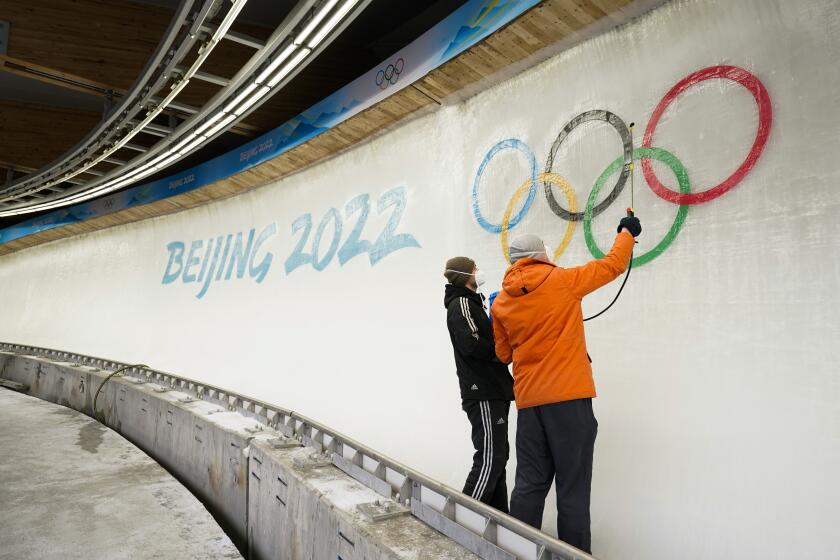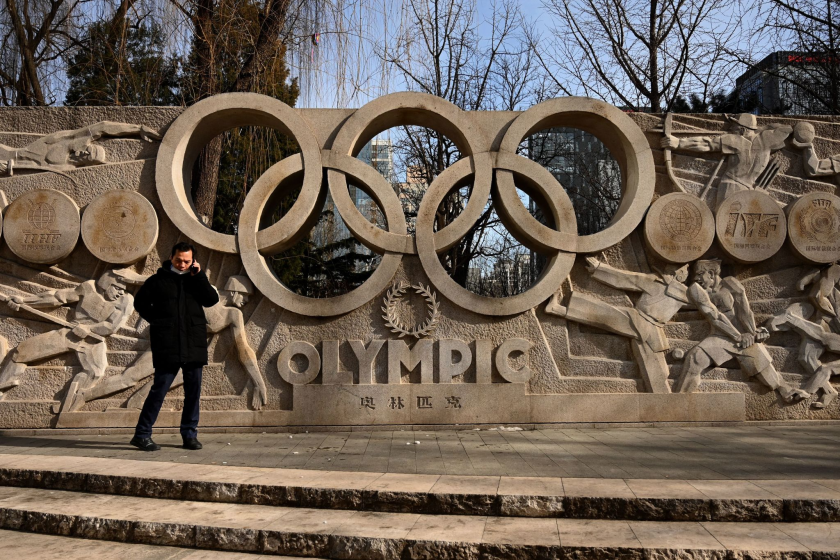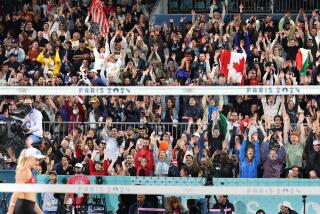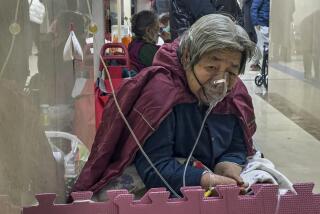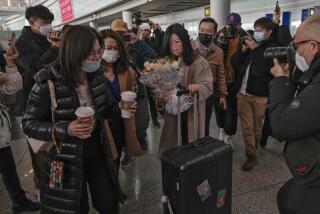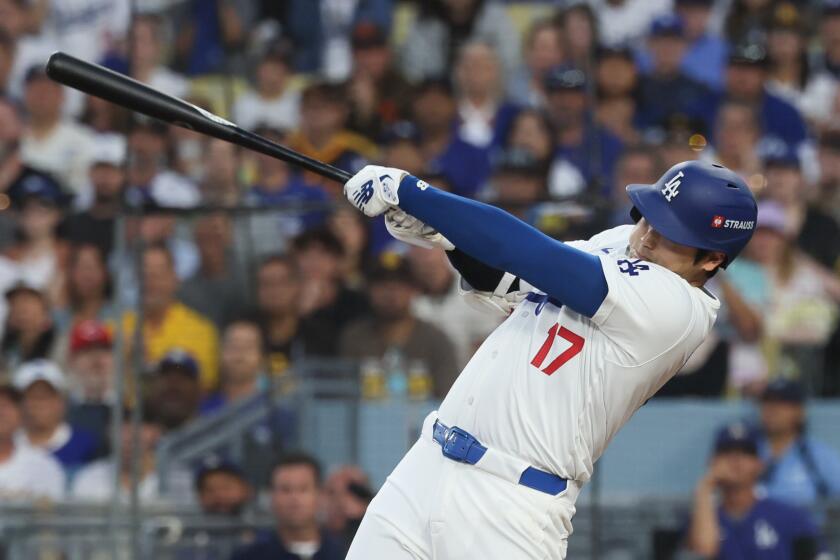COVID remains the most formidable, frightening foe at Beijing Olympics
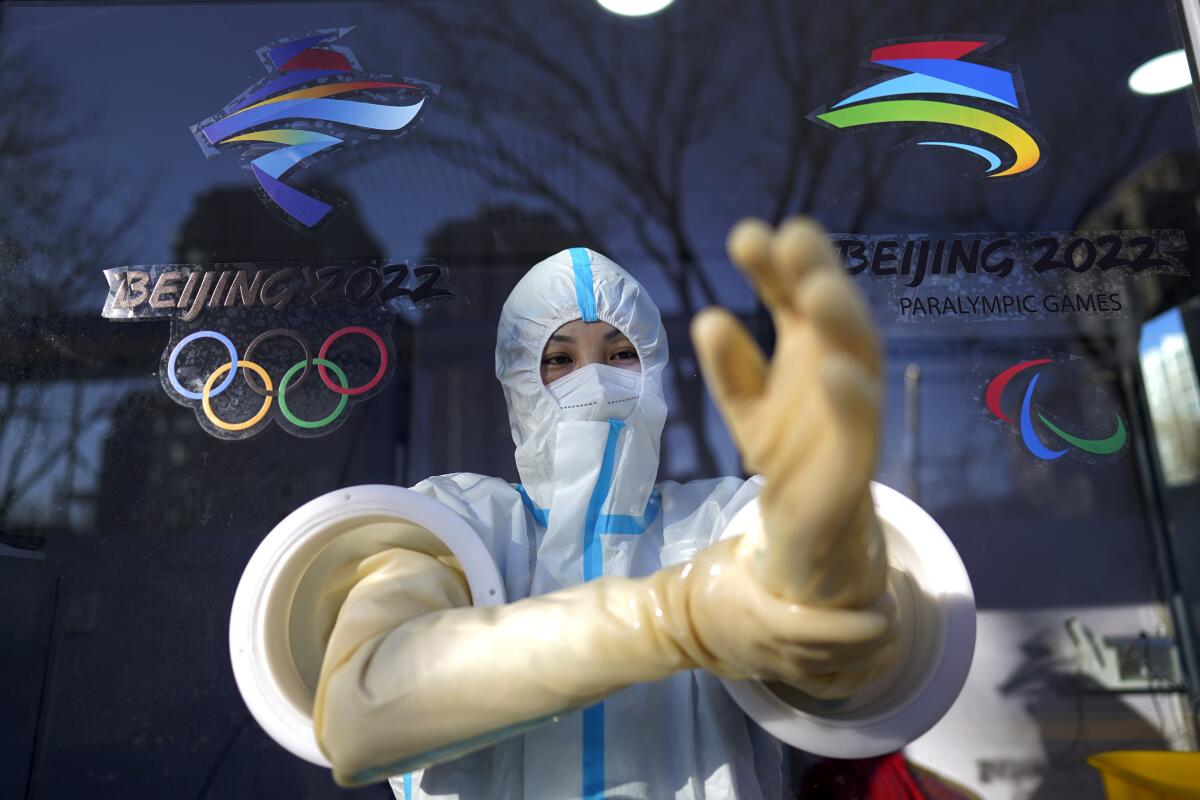
- Share via
BEIJING — The opening ceremony for the 2022 Winter Olympics is still days away, but the U.S. has already celebrated its first big win.
When a team charter departed Los Angeles International Airport last week, all of the expected athletes were on board. That means all 100 of them passed their pre-travel coronavirus tests.
“It has definitely been stressful,” said Brittany Bowe, a speedskater competing in her third Olympics. “You’re usually worried about being in perfect shape, but this year has added a whole new element of trying to stay healthy.”
Beijing was supposed to herald a return to normal, or something akin to normal, after the pandemic-related challenges of the Tokyo Olympics last summer. Worries were fading as vaccinations increased and case numbers declined. There was talk of arenas packed with cheering fans.
Then came the Omicron variant.
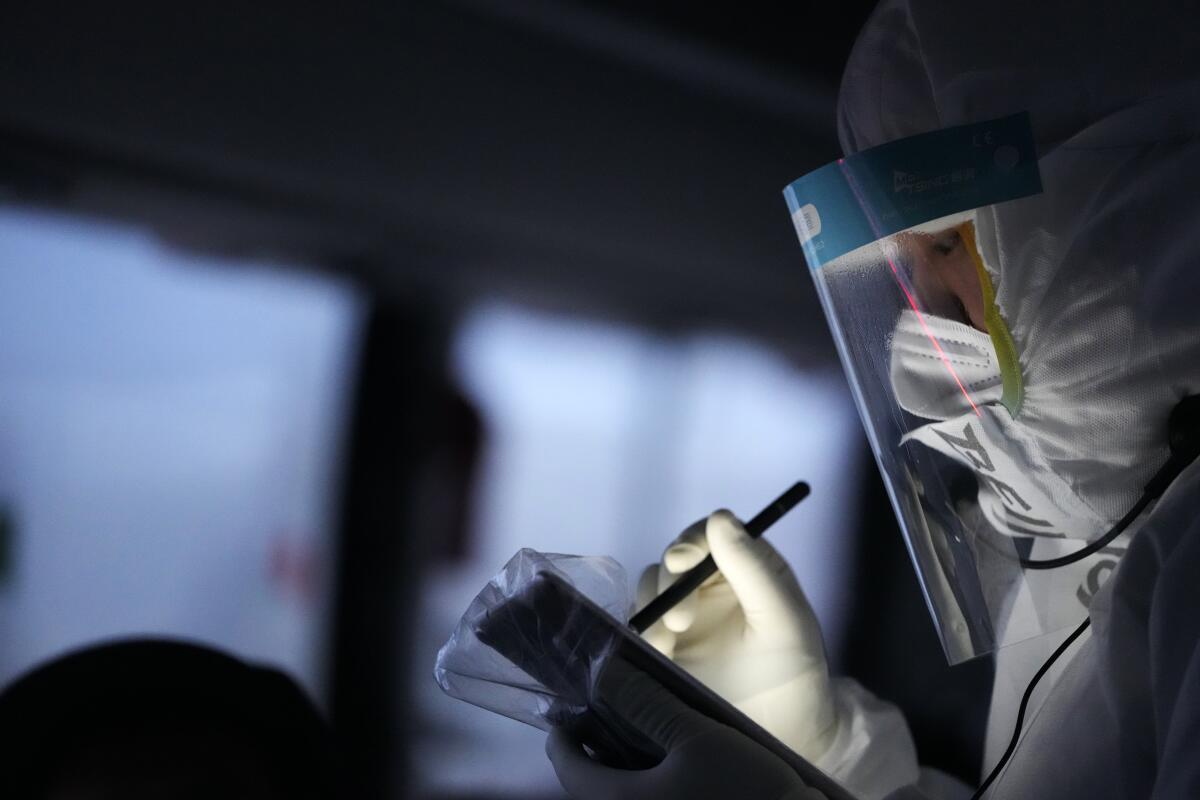
With infections surging through winter, Chinese officials have established restrictions significantly harsher than the “bubble” in Tokyo.
Thousands of athletes, coaches, officials and the media must be vaccinated and arrive on designated flights, greeted at the airport by an army of healthcare workers dressed head-to-toe in protective gear, looking like storm troopers from “Star Wars.”
The daily regimen includes throat swabs, mask wearing and frequent temperature checks. Anyone daring to step outside the “closed loop” faces expulsion from the Games. Only a select group of invitees will be allowed inside to watch from the stands.
“The prevention and control work of Beijing 2022 has been rigorous and scientific,” said Huang Chun, a health official with the local organizing committee. “We will ensure there is no room for error.”
A look at the different NBC platforms where you can find all the Winter Olympics sports and on what day.
With the opening ceremony scheduled for Friday — and 3,000 or so athletes expected to compete — officials began publishing daily statistics Jan. 23. As of Tuesday, COVID-19 cases at these Games had reached 232, or half of the Tokyo Olympics’ overall total of 464. More troubling, athletes and coaches were testing positive at a significantly higher rate than other Olympic-related visitors.
The numbers matter to a Chinese government that has pursued a nationwide “zero tolerance” policy.
When a Beijing office worker tested positive for the Omicron variant in January, officials instantly cordoned off her building, bringing pillows and bedding for employees stuck inside, according to media reports.
Another snap lockdown kept shoppers inside a mall for days. A woman in Zhengzhou posted on social media that, when a sector of her city abruptly shut down, she had to remain at the home of a man she had met on a blind date.
“China’s confidence in its ability to deliver a simple, safe and splendid Winter Olympics comes from its meticulous preparation, and trust and support from the international community,” a commentary in the official Xinhua news agency stated.
No precautions could stop the COVID-ravaged NHL from withdrawing its players in December. Swiss officials wondered whether the Beijing Games should be delayed as Tokyo’s were, prompting the IOC to push back with some help from the World Health Organization.
“I’m confident, given the information that we have, that the measures that are in place for the Games are very strict and very strong, and we don’t at this point see any increased risk of disease transmission in that context,” said Dr. Mike Ryan, executive director of the WHO’s health emergencies program. He added: “But obviously we will keep all the measures that are being put in place under constant review.”
In what would have been a stark departure from Tokyo’s empty stadiums and arenas, Beijing officials planned to sell tickets to the general public. They scaled back to “selected groups” in mid-January.
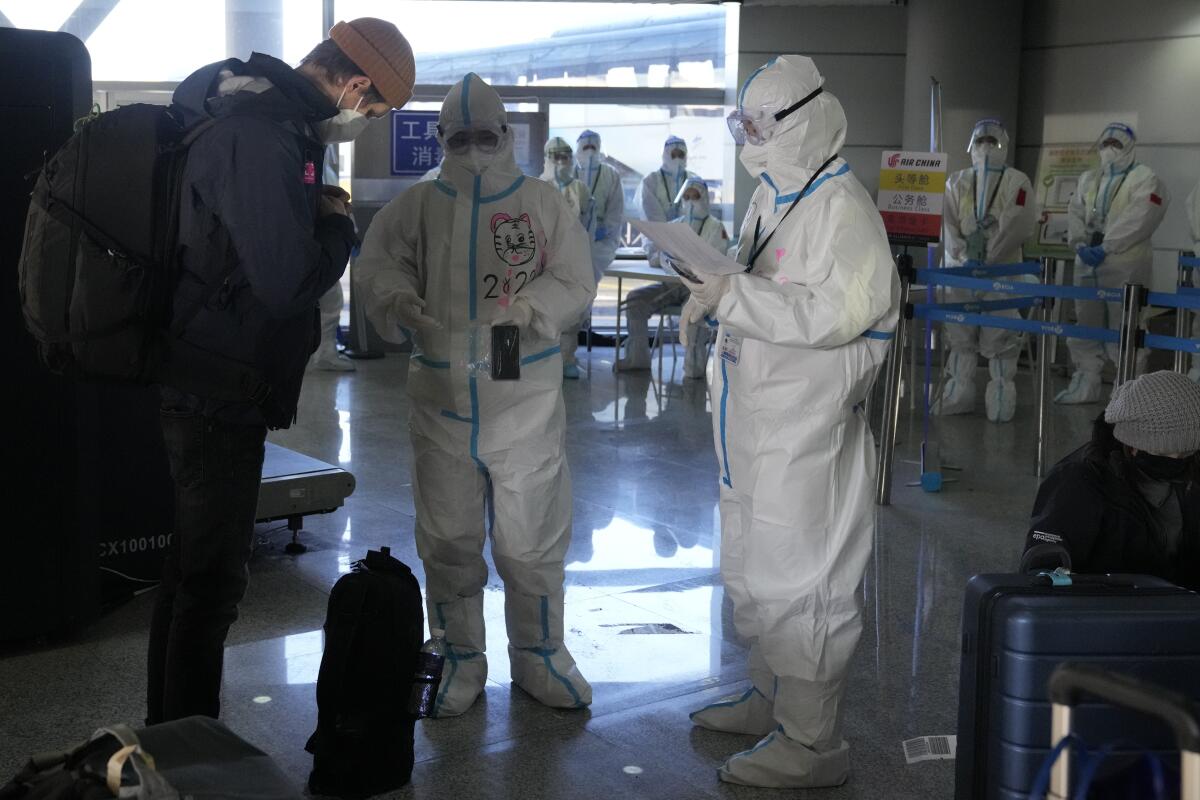
Shortly after New Year’s Day, workers inside the Beijing loop were sealed from the outside world. They were joined by Swiss snowboarder Patrizia Kummer, who opted to quarantine three weeks in China rather than get vaccinated. Olympic leaders urged athletes everywhere to be cautious.
“Beijing starts now for all of us,” IOC president Thomas Bach said. “We must do everything to ensure that the Olympic dreams of athletes are not taken away just days before departure.”
This message resonated with U.S. Olympic & Paralympic Committee leaders, who had already gotten a scare when star skier Mikaela Shiffrin caught the virus. Shiffrin recovered quickly; athletes testing positive closer to the competition might not be as fortunate.
On Tuesday, U.S. bobsled pilot Elana Meyers Taylor announced that she had tested positive for the coronavirus; another bobsledder, Josh Williamson, has also tested positive.
“This has not been an easy pill to swallow,” Williamson said on social media. “I have felt pretty helpless.”
Other reported cases have included a top Austrian ski jumper, Russian skeleton racers and five members of the Canadian hockey team.
There have been claims that Beijing is being too careful. Officials recently agreed to dial back the sensitivity of their testing amid concerns that athletes who had previously recovered from COVID-19 were being flagged. They also reduced the quarantine period for close contacts to seven days.
“We have put in place the protocols that have helped allow people who have tested positive to come through the system where it’s safe for them to do so and will allow them to train and compete,” said Dr. Brian McCloskey, chair of the medical expert panel for the Beijing Olympics.
Politics have once again have thrust themselves into the Olympics and athletes must walk the line between social protest and the right to compete.
It was little comfort to the 100 American athletes who boarded the USOPC chartered jet in Los Angeles. They represented about half the 224-person roster, with others traveling to China from Europe.
Curler Chris Plys described the last few months as “kind of surreal.” After taking her final preflight test, hockey player Amanda Kessel couldn’t sleep all night, saying: “You never feel safe until you get that negative back.”
Bowe, the speedskater, was relieved when she finally got her travel documents stamped and could show up at the airport. But, she suggested, the waiting isn’t quite over.
“Step one is complete,” she said. “We still have to test every day in Beijing.”
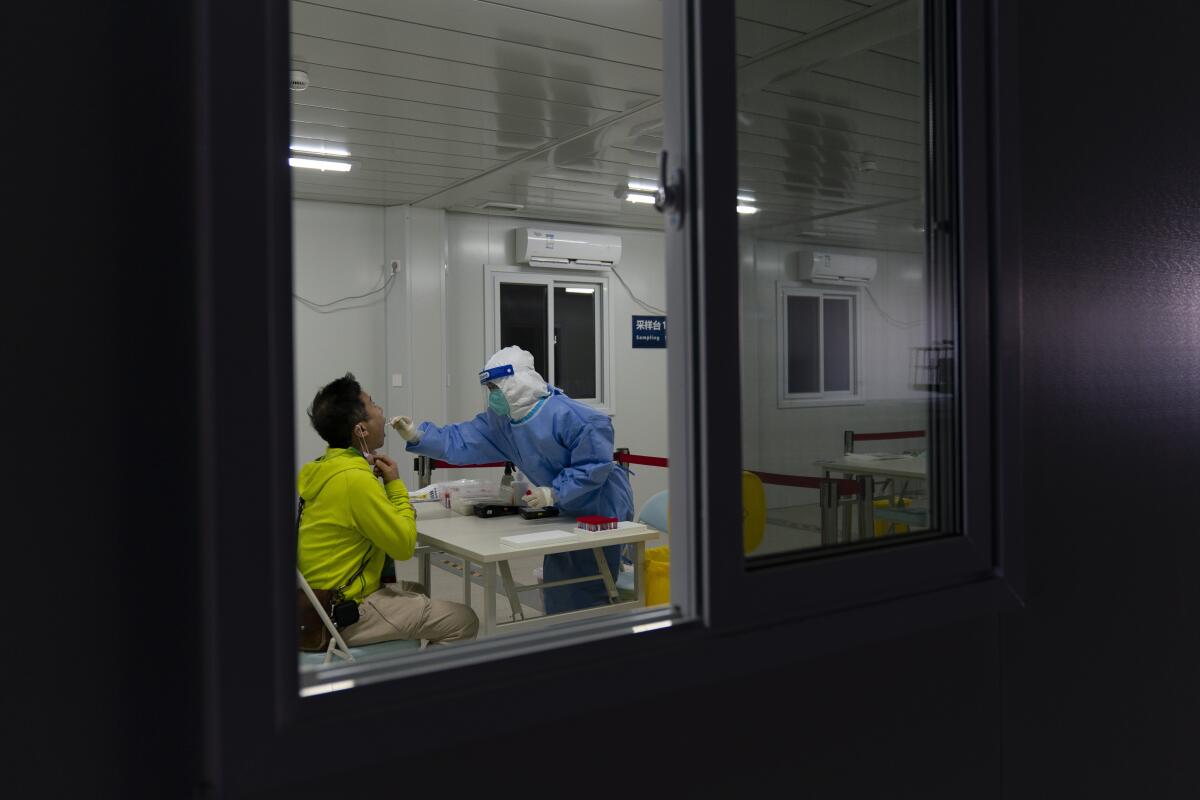
More to Read
Go beyond the scoreboard
Get the latest on L.A.'s teams in the daily Sports Report newsletter.
You may occasionally receive promotional content from the Los Angeles Times.

